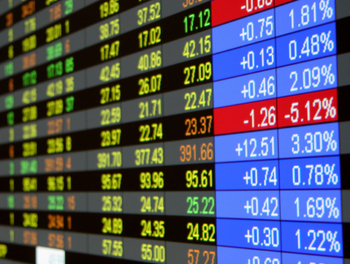
Experts discuss ways to freeze trading to stop runaway computer errors.
Talk of a securities market “kill switch” dominated discussions in a recent Securities and Exchange Commission (SEC) Market Technology Roundtable. A kill switch would stop runaway computer errors from driving securities markets into panic. Participants were nearly uniform in their expressions of support for the technology, although some urged caution in implementation.
The assembled group of academics, market regulators, and information technology and operations executives came from across the financial sector. Participants met to discuss the best methods for managing complications that arise from the automated processes that now dominate market trading.
The kill switch concept would allow exchanges to set limits on the number of trades an individual firm can make in a given period of time. If a firm exceeds the limit, its trading will be automatically suspended. In explaining the underlying problem, SEC Chair, Mary Schapiro explained that with the “inherent speed of trading,” a single technological failure “may cascade into other venues and affect many other parties.”
Shapiro’s concern reflects recent events in which computer failures caused expensive aberrations in market activity. For example, over the course of just a few minutes in May 2010, the Dow Jones Industrial Average plummeted more than 9%, causing $1 trillion in losses before recovering just as quickly. Investigators with the SEC and Commodity Futures Trading Commission (CFTC) attributed this “flash crash” to an error in high frequency trading software, which allows investors to trade securities hundreds of times every second.
Roundtable participants were receptive of the kill switch idea. Many of the assembled experts provided viewpoints on operationalizing the kill switch, and on its effectiveness relative to other safeguards. They also explored the role that the kill switch, as a broad protective mechanism, should play alongside reforms companies should take on their own.
Elizabeth King, Head of Regulatory Affairs at GETCO, a Chicago-based trading firm, expressed in prepared remarks that risk regulation is most effective when it is “multi-layered” and “overlapping.” She added that in addition to controls implemented at the firm level, a kill switch would be a valuable “additional layer of risk control” if accompanied by “clear and transparent procedures for notification and disconnection from the exchange.”
Jamil Nazrali, representing the investment firm Citadel LLC, also agreed with the premise of the kill switch. He advanced the idea that each trader or trading company should have access to a manual kill switch that could disable its own runaway trades. He suggested that exchanges should install “an independent direct connection or web interface . . . to allow a market participant to quickly cancel open orders.”
While panelists agreed that automated high-volume trading should be subjected to more regulation, some were wary of removing human judgment from a decision to freeze trading. Lou Steinberg, Chief Technology Officer at the brokerage TD Ameritrade, cautioned that computerized kill switches “carry more potential harm than manual ones” because they are just as likely as any software to malfunction.
The SEC roundtable comes on the heels of a recent hearing of the Senate Banking Committee Subcommittee on Securities, Insurance, and Investment on regulating computerized trading.
At that congressional hearing, a former trader explained how lightning-speed automated trading can spread small computer glitches across the market. Firms will try to adjust their position based on a falling stock price affected by a computer malfunction. Automated traders can shift their positions at substantial volume in a matter of seconds. This could cause stock prices to fall even faster. By the time any market participants have realized that the initial price-drop is based on a computer error, the market can lose a huge amount of value.
The SEC roundtable and Senate hearing parallel efforts underway in Europe. European regulators are testing alternative methods to slow the pace of automated trading. A proposal under consideration in the European Parliament would require all traders wait at least 0.5 seconds before executing a trade. Advocates say that this would allow sufficient time to stop a flawed trading algorithm from dragging the market into chaos.



